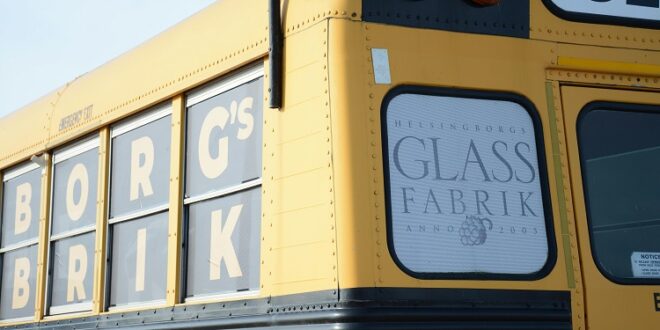In the dynamic world of advertising, businesses constantly seek innovative ways to maximize their marketing budgets while achieving significant reach and impact. Among the myriad of advertising options available, bus wrap advertising has emerged as a remarkably cost-effective strategy. This article explores how bus wrap advertising compares to traditional marketing methods in terms of cost efficiency, reach, and overall effectiveness.
Understanding Bus Wrap Advertising
Bus wrap advertising involves covering a bus with promotional graphics, essentially transforming the vehicle into a mobile billboard. These wraps can be full, partial, or specific to certain parts of the bus, like the windows. Printed on high-quality vinyl, bus wraps are designed to be durable and visually striking, capturing the attention of both pedestrians and other motorists as the bus travels through various routes.
Cost Analysis: Bus Wrap Advertising vs. Traditional Marketing
Initial Investment and Longevity
- Bus Wrap Advertising: The primary cost of bus wrap advertising lies in the design, printing, and application of the wrap. This is a one-time expense, and once applied, the advertisement can remain on the bus for several months to a year, continuously generating impressions without additional costs.
- Traditional Marketing: Traditional marketing methods, such as TV, radio, print, and digital ads, often involve recurring expenses. For example, TV and radio ads require payment for each time slot, while print ads necessitate repeated payments for each issue of a magazine or newspaper. Digital ads also incur ongoing costs based on impressions or clicks.
Cost per Impression (CPI)
- Bus Wrap Advertising: The cost per impression for bus wraps is generally lower compared to traditional media. Since buses operate daily and cover extensive routes, a single bus wrap can generate thousands of impressions per day. Over the lifespan of the wrap, the cumulative impressions can reach millions, significantly reducing the CPI.
- Traditional Marketing: While TV and radio ads can also generate high numbers of impressions, the cost per impression tends to be higher due to the premium rates for prime time slots and the transient nature of broadcast media. Print ads and digital ads, though potentially lower in CPI than TV and radio, still incur higher overall costs due to the need for frequent placement to maintain visibility.
Reach and Audience Targeting
- Bus Wrap Advertising: Buses traverse various parts of a city, reaching a diverse and broad audience. This mobility ensures that the advertisement is seen by different demographics throughout the day. Additionally, bus routes can be selected to target specific areas, optimizing exposure to desired customer segments without additional costs.
- Traditional Marketing: Traditional marketing methods offer targeted advertising, but often at a higher price. TV and radio ads targeting specific time slots or demographics come with increased costs. Digital ads allow for precise targeting, but the cost per click or impression can add up quickly, especially in competitive markets.
Durability and Maintenance
- Bus Wrap Advertising: High-quality vinyl wraps are designed to withstand various weather conditions, ensuring the advertisement remains vibrant and intact for the duration of the campaign. Maintenance is minimal, and any necessary touch-ups are relatively inexpensive.
- Traditional Marketing: Traditional ads, particularly print and digital, can quickly become outdated, requiring frequent updates and replacements. This need for constant renewal adds to the overall cost and complicates budget management.
Real-World Examples of Cost Efficiency
Case Study: Local Business Campaign
A local retail store decided to try bus wrap advertising to increase foot traffic. The initial investment for a full bus wrap was $5,000. Over a six-month period, the bus operated daily in a busy metropolitan area, generating an estimated 1 million impressions. This resulted in a cost per impression of just $0.005. In comparison, a similar investment in TV advertising would have resulted in significantly fewer impressions over the same period, with a higher CPI.
Case Study: Tech Startup Launch
A tech startup used bus wraps as part of its launch campaign. By investing $10,000 in multiple bus wraps covering key routes around tech hubs and city centers, the startup achieved widespread visibility. Over a year, the wraps generated millions of impressions, driving brand recognition and website traffic at a fraction of the cost of a digital ad campaign with comparable reach.
Additional Benefits Enhancing Cost Efficiency
Long-Term Exposure
Bus wrap advertisements offer prolonged exposure compared to traditional ads. While a TV or radio ad lasts for a few seconds to minutes and print ads are quickly discarded, bus wraps provide continuous visibility over months.
High Impact and Memorability
The large, bold designs of bus wraps are hard to ignore. Their sheer size and movement create a lasting impression, often more memorable than fleeting traditional ads. This high recall value enhances the effectiveness of the campaign, reducing the need for frequent re-advertising.
Flexibility and Creativity
Bus wraps allow for creative freedom, enabling businesses to design visually stunning and unique ads that stand out. This creative flexibility can lead to higher engagement and interest, further maximizing the return on investment.
Conclusion
Bus wrap advertising presents a compelling, cost-effective alternative to traditional marketing methods. Its ability to generate extensive, prolonged exposure at a lower cost per impression makes it an attractive option for businesses looking to maximize their advertising budgets. By transforming buses into moving billboards, brands can achieve widespread visibility, targeted reach, and high recall, all while maintaining control over their marketing expenditures. As companies continue to seek efficient ways to promote their products and services, bus wrap advertising stands out as a strategic and economical choice in the evolving advertising landscape.
 HammBurg Be informed with latest news, reviews, entertainment, lifestyle tips, and much more.
HammBurg Be informed with latest news, reviews, entertainment, lifestyle tips, and much more.




